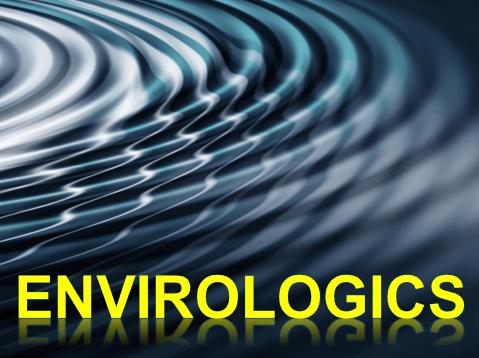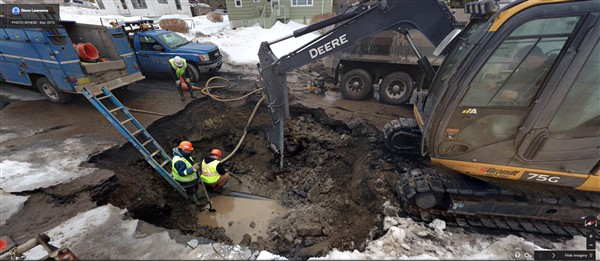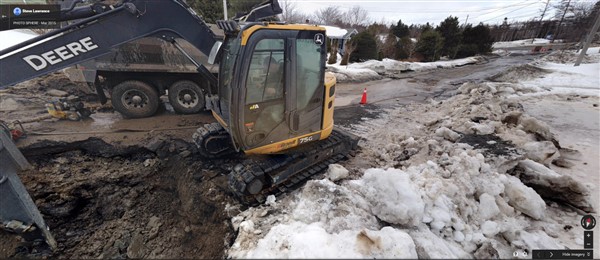Do you know about your water pipes?
Much of the North America's water distribution pipelines currently in sevice today are at the end of their projected lifespan. According to American Water Works Association estimate, about 65% of 1.5 million km's of water mains consist of cast iron, steel or ductile iron, and are in need of renovation. As pipes age, visible distress signs, such as increased number of leaks and breaks, and dirty water complaints increase exponentially.
This break and subsequent repair represents a normal occurence in municipalities across North America and are causing substantial public infrastructure and private property damage. Click the photo above or below to see this water main break and repair in 360°.
A large city in North America can experience approximately 1,300 water main breaks every year losing hundreds of millions of litres of clean drinking water. Furthermore, tuberculation and corrosion in water mains restrict water flow and aid microbial (bacterial) growth along interior walls. These factors increase water systems' operation, maintenance and renovation costs, and amplify public health risks.
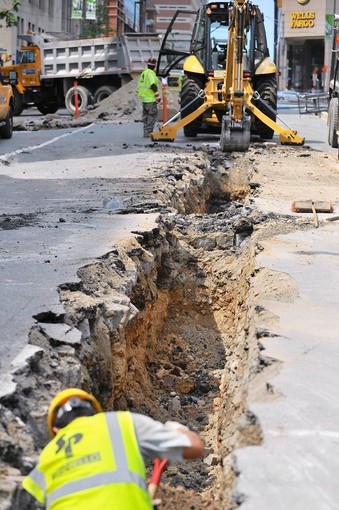
Often, deteriorated and poorly functioning water mains are replaced by digging up the entire roadway and installing new pipes. Traditional open cut, dig-and-replace operations can result in significant traffic delays, major disruptions to businesses, and high capital cost for cash strapped cities. Therefore, new and cost-effective methodologies and technologies are needed to renew aged water distribution systems.
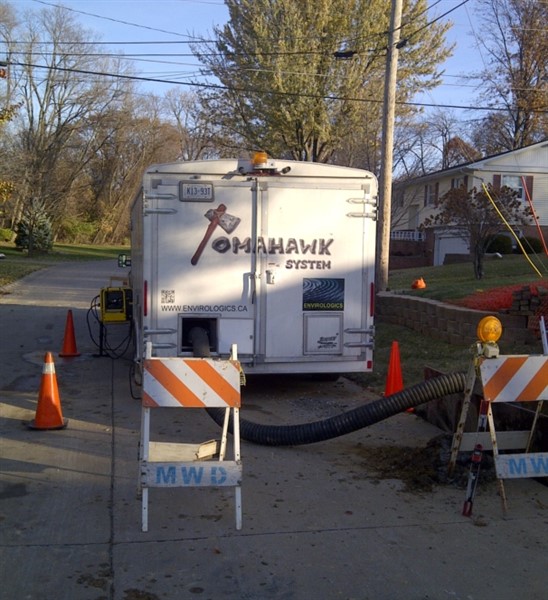
Envirologics has developed a dry, trenchless technology that will renew deteriorated water supply pipes at a fraction of cost and time as compared to traditional open-cut pipe replacement methods. This technology will allow water utilities to rehabilitate water supply pipelines without excavating city streets. Thus, it will significantly reduce social and environmental costs (e.g., traffic delays, inconvenience to public and businesses, and greenhouse gas emissions) due to construction activities.
